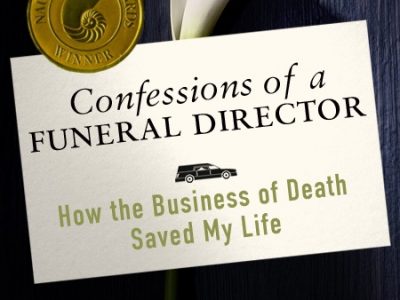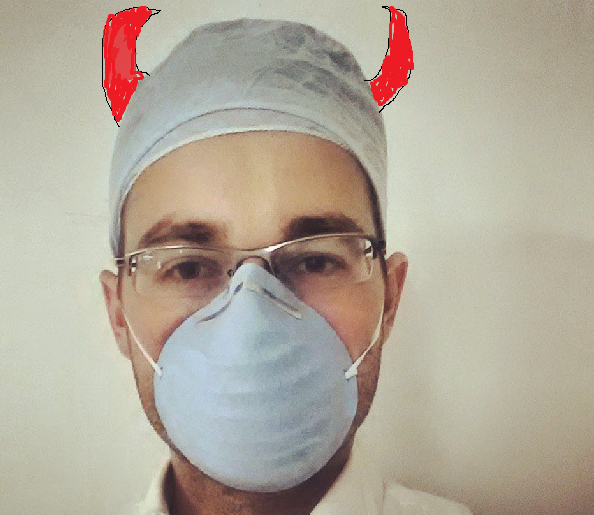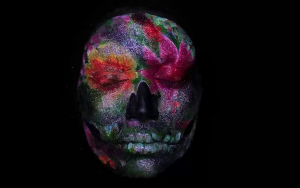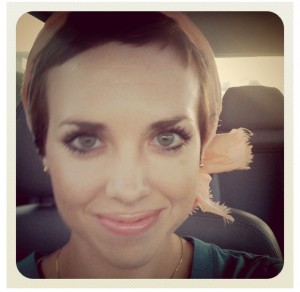I Carry Death
Tears in the produce aisle of Wal-Mart.
Hugs at the gas station.
An affectionate gaze at the pizza shop.
Created by death.
To you, I’m all the depth without any superficial.
The person who helped you walk through the shadow.
The person who stood with you as you said your last goodbye.
As the lid was closed, I was there.
I am not your friend.
I am not your bar buddy.
We will never talk sports, or politics or local gossip.
I am almost your brother.
Almost family.
I am your funeral director.
And I carry your death experience.
I carry in my own heart your grief, you insecurities, your hardest moment.
I remind you of him, of her … in many cases, I remind you of them.
I carry the depth. Your deep is in me.
The depth of this community is my association.
Everywhere I go, I carry death.
Ten Things to Hate about Me
“I hate this guy” he wrote, referring to me. This past weekend I was on the front page of NBC’s news site and the hate remark was in reference to the content of the article.
I get it. I put myself out on facebook, twitter and my blog and not everyone will like me. BUUUUTTT, it still kinda hurts.
In addition to that remark, this last month has brought some disapproving assessments such as “You’re a disgrace to the funeral industry.”, “You should quit.”, “(your content) shouts inappropriate and trashy” and that I’m “completely nuts.” Because the value of the conversation about death and funerals outweighs the negative comments, I’m okay with the criticism. In fact, I welcome it, knowing that criticism and even hate are all apart of this important conversation.
But, if you’re gonna hate, let me help. Let me help by attempting to put your feelings into words. I think we can have a better conversation if you know WHY you hate me. So, here are ten:
One. I represent a rather avant-garde approach to death and funerals.
I like tradition. Most of us do. Tradition becomes a part of who we are. And when some young guy like me comes along and starts talking about and questioning a part of your tradition, it’s like I’m questioning and talking about you. It’s like I’m demeaning you and your tribe.
Two. I don’t treat death as sacred as you might like me to.
In my opinion, death and the funeral industry aren’t like the sacred Ark of the Covenant … something that can only be talked about and handled by the professionals … something that’s hidden behind layers of veils. I’ve removed the veil. I don’t treat it like it’s a distant abstraction. I think it’s real and near. I weave humor into it. I don’t think it’s only for the professionals. In fact, I think – in one way or another – we all have a right to talk about it. And yes, even Tweet about it.
Three. I’m a millennial and I tend to be postmodern.
I just make the millennial cut. As far as being postmodern, that has little to do with age and a lot to do with perspective.
I do not see things in absolutes like you may. I see the world differently. I’m not looking for metanarratives; I don’t believe that one size fits all, and so I don’t believe one type of funeral ritual is good for all. I see multiple stories, many narratives and I realize that each narrative, each community is looking for something different in both life and death.
Four. I’m writing my blog for millennials and postmoderns.
My generation isn’t interested in the funeral business as much as they’re interested in the people of the funeral business. I – my story, my narrative, my life, my thoughts – will be the foundation of my sustainability as a funeral director. Not necessarily marketing, the new “personalized” merchandise, the next great package or even an awesome webpage (my website looks as dated as a Nokia clam shell). My story — good and bad — will shape my future in this industry. And being able to tell that story in social media is the means to that end.
Five. I’m willing to be transparent.
Maybe even too transparent? Because I think transparency is akin to vulnerability. And vulnerability is one of the keys to connecting with postmoderns and millennials like myself.
Six. I’m a bronie.
Just kidding. Okay, maybe I like My Little Ponies a tiny, tiny bit.
Seven. I like Mother Earth.
I don’t think that this world is something we should use and abuse because there’s another, better world in the life beyond. I don’t think earth is a playground that we can mess up because REAL life starts after this one. I believe this world is special … that we should treat it as such. And while I serve, honor and respect people who want embalming, I’m moving towards natural burial as a more environmentally friendly and psychologically healthy method of disposition.
Eight. I’m a heretic.
Yes, my desire to move away from industrialized funerals, including embalming, is considered heresy for some. You’re welcome to burn me on social media. Just don’t use real fire. Please. I have skins. I burns. It hurts.
Nine. It’s not just that I’m a millennial and postmodern, it’s also that I’m young and I have a platform.
I’m not using my platform to “tell everyone how it SHOULD be done.” I’m sharing my thoughts and inviting a conversation. I want the conversation, even if it leads down a path I’m not comfortable with. Just so we’re clear. And yes, I’m young. I’m 32.
Ten. I like Nickelback, The Twilight Series and … I’m not a big fan of cats. Sorry.
Death Warmed Over: A Funeral Food Recipe
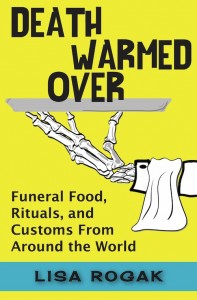 We in the Western world consider the concept of being a little bit dead along the same lines as being a little bit pregnant: it’s simply not possible.
We in the Western world consider the concept of being a little bit dead along the same lines as being a little bit pregnant: it’s simply not possible.
Many cultures would politely disagree. For some, not only are there different degrees of dead, but they also like to keep the bodies around until they concur that the person is 100% dead, or at least 100% able to proceed to the next world, wherever that may happen to be. Of course, in the interim, the almost-dead still have to eat, so people in these cultures continue to serve food to their undead relatives, usually foods that were favorites of the person when they were 100% alive. Sometimes the type and amount of food served to the formerly-vibrant family member depends on how dead – or almost-dead – he or she happens to be.
It’s possible that the practice of feasting after a funeral originated with early people who were determined to send their dead off with some nourishment for the journey. And whatever was left over, well, at least the living could eat it. Some cultures took this to extremes by placing a tube in the mouth of a corpse before burial, and snaking it out of the casket and up through six feet of compacted dirt. This was to ensure that the deceased would continue to receive nourishment during the long journey into the afterlife, or at long as somebody remembered to put food in the tube.
But a long journey for mourners attending a funeral may have also been responsible for the development of some death food customs. After all, it would take a number of days for word to travel about a deceased relative living in a distant village, and then an equal number of days to travel to view the body and visit with the mourners. If the grieving family expected others to come, they had to be prepared to feed them.
For most cultures today, sharing a meal after the funeral has become pretty standard; indeed, it’s considered rude to refuse. In any case, there’s no better way to prove you’re alive, as compared with the body in the box you’ve just said farewell to, than by eating. Actually, most people would include sex in their response, and indeed, food combined with carnal hunger can sometimes provide a double dose of post-funeral vitality, not to mention a jump in the birth rate exactly nine months later.
However, as funerals become more of a do-it-yourself proposition – not the embalming, mind you –with more people taking charge of planning their own funeral services with a mind towards turning it into a party instead of a sobfest, thanks in part to the popularity of the TV show Six Feet Under, learning about the funeral practices of other cultures can only help us put the fun into funeral.
Some people may believe it’s distasteful to spend time thinking about how death and food are so interconnected – after all, both are an essential part of life – but I’d like to think that many more are intrigued by discovering the differences, as well as the similarities. And my book Death Warmed Over: Funeral Food, Rituals, and Customs from Around the World – which I’ve recently reissued as an e-book after being out of print for years – is chock-full of both differences and similarities.
Here’s how Egypt does it:
Today, Egyptian culture is primarily Muslim, and funeral customs in the country generally follow traditional Islamic principles, including the distribution of food to area poor.
But aside from today’s Islamic rituals, Egyptian funeral food has a long and illustrious past. In fact, possibly the first time you learned that food was connected with funerals – aside from attending one of a relative – was in history class when you got to the chapter about the Egyptians and the Pyramids. Though evidence of fancy, elaborate feasts that lasted for days was uncovered by archaeologists working inside the pyramids, the common Egyptian also received a funerary feast send-off into the next world. In fact, the earliest known Egyptian funerals show proof of food offerings to the dead, both to the newly deceased and to the family’s ancestors. It seems that the living always went all out, as if to ensure a place for the deceased as well as an opportunity to get in good with the gods upstairs for when their time comes.
Everything from beer and wine, cakes, and even the intact head of a bull were used as funeral offerings in ancient Egypt. This makes sense, when you consider that in the days of ancient Egypt, each man was expected to devote one-fifth or more of the value of his estate to the cost of his funeral, which included feeding all the guests – both the living relatives and the dead ancestors.
In Ancient Egypt, chocolate was very much prized as a rare and expensive delicacy, the better to send the deceased off to the other side. Today, few mourners – in Egypt and elsewhere – would find fault with digging into a big hunk of chocolate cake at a funeral, wake or memorial.
Ancient Egyptian Chocolate Cake
1-3/4 cups unbleached flour
2 teaspoons baking powder
1 teaspoon cinnamon
1 teaspoon ground cloves
4 ounces (4 squares) semi-sweet baker’s chocolate
1/2 cup brewed coffee
1 cup sugar
2 eggs
1 teaspoon vanilla extract
1/2 cup unsalted butter (1 stick)
2 cups whipping cream
1/4 cup sugar
2 teaspoons vanilla extract
1/2 teaspoon cinnamon
Chill mixing bowl and beaters. Whip the cream until stiff, add slowly the vanilla, sugar, and cinnamon. Do not overbeat!
In a medium-sized bowl, sift together the flour, baking powder, cinnamon, and cloves. Set aside.
In a small saucepan, combine the coffee and chocolate over low heat until chocolate is melted. Set aside.
Preheat oven to 350 degrees. Using an electric mixer on low speed, cream the butter and sugar until fluffy. Add the eggs, one at a time, beating until smooth. Add the vanilla and the chocolate mixture until smooth. Add the coffee-chocolate mixture and the flour mixture, beating until smooth.
Grease and flour two 8-inch cake pans. Pour the batter into the pans. Bake in oven for 30 minutes or until a tester comes out clean. Cool in pans on rack for 15 minutes. Invert pans and cool cakes on rack completely.
While the cake is cooling, prepare the frosting. Using a chilled mixing bowl and beaters, whip the cream until stiff. Slowly add the vanilla, sugar, and cinnamon. Chill until ready.
Frost when cake is cool. Refrigerate after use.
Serves 10
*****
Today’s incredible guest post was brought to us by author and journalist, Lisa Rogak. Lisa is the author of “Death Warmed Over: Funeral Food, Rituals, and Customs From Around the World.”
She is the New York Times bestselling author of more than 40 books. Her works have been mentioned in The Wall Street Journal, Parade Magazine, USA Today, Family Circle, and hundreds of other publications, and she has appeared on Oprah. Her book Haunted Heart: The Life & Times of Stephen King was nominated for an Edgar.
You can also visit her website, www.lisarogak.com.
Aging, Dying and Being Reborn in Stop Motion
From the video’s creator: “This is an animated self-portrait exploring the idea of rebirth and illustrating the transfer of energy from one incarnation to another. I painted this stop frame animation on myself over 5 days, using some face paints, a mirror and a camera.
Ruby from Emma Allen on Vimeo.
I’d like to think there’s truth to this video. I’d like to think there’s a lot of truth to it. In fact, I wonder how much of me, how much of you, is made up of those who have gone before us. That not only our character constitution, but our physical constitution, is inherited from our ancestors. Kum ba yah.
